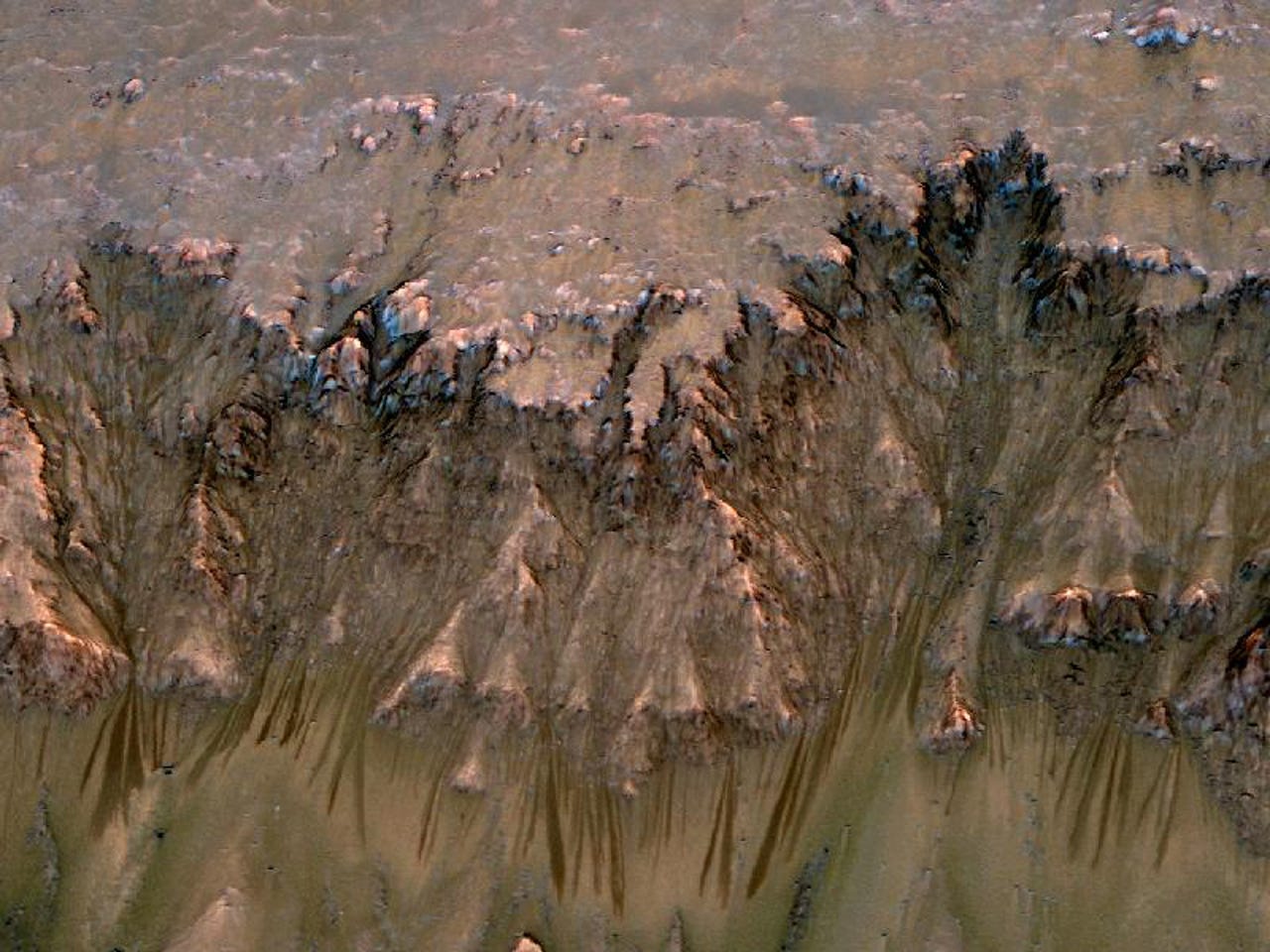Several observation from NASA's Mars Reconnaissance Orbiter show evidence of salt water flowing during the warmest months on Mars. The discovery of dark finger-like features that grow and fade during the seasons give new hope to the possible existance of life on the Red Planet.
"The best explanation for these observations so far is the flow of briny water," said Alfred McEwen of the University of Arizona, Tucson. McEwen is the principal investigator for the orbiter's High Resolution Imaging Science Experiment (HiRISE).
More than 1,000 individual flows have been discovered from 0.5 to 5 yards wide with lengths of hundreds of yards long.
This image shows flows that appear in spring and summer on a slope inside Mars' Newton crater.
Plus, check out this gallery of highlights from the rover Spirit's stay on Mars.
Image credit: NASA/JPL-Caltech/Univ. of Arizona

